Espoo Museum of Modern Art
Mobile Guide to the Exhibition Experiments in Concretism
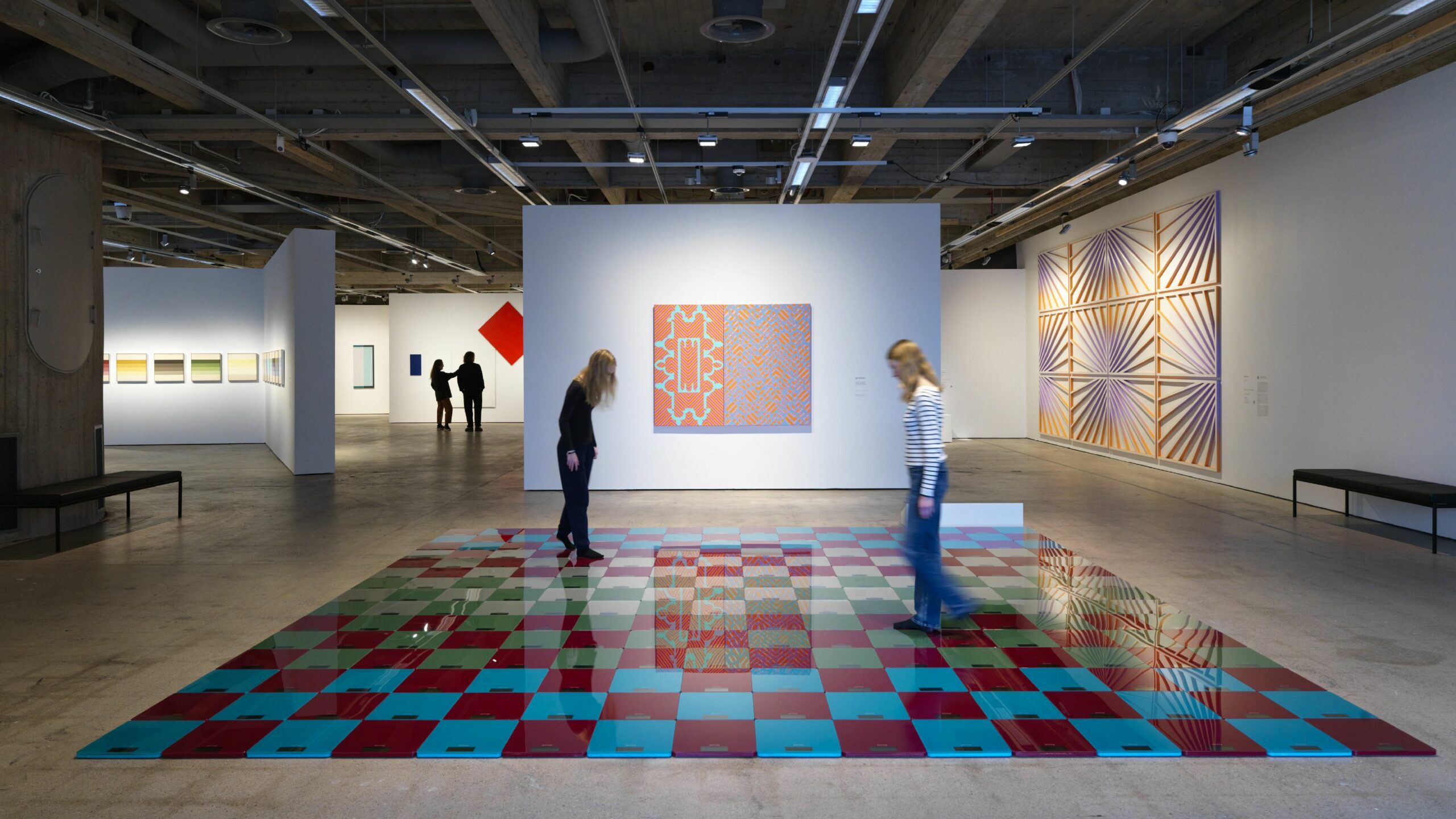
Experiments in Concretism offers a fresh take on the long tradition and contemporary forms of concrete art. Featuring work by more than fifty artists, the show highlights the complexity, material diversity and playful approach of the movement.
Concretism is an art movement characterised by the use of non-representational forms, structures and geometry. The exhibition at EMMA presents concretist works from different periods, from the very beginning of the movement in the 1950s to the present day. It also celebrates the centenary of Lars-Gunnar “Nubben” Nordström (1924–2014), a pioneer of Finnish concretism.
This mobile guide introduces you to some of the artists in the exhibition.
Artists featured in the exhibition are:
Timo Aalto, Martti Aiha, Siim-Tanel Annus, Elina Autio, Stig Baumgartner, Inka Bell, Juhana Blomstedt, Bård Breivik, Birger Carlstedt, Kari Cavén, Lars Christensen, Jacob Dahlgren, Sonia Delaunay, Ann Edholm, Carolus Enckell, Beryl Furman, Kristján Guðmundsson, Jorma Hautala, Erkki Hervo, Mikko Jalavisto, Elina Juopperi, Kaisu Koivisto, Ola Kolehmainen, Matti Koskela, Matti Kujasalo, Muriel Kuoppala, Antti Kytömäki, Leonhard Lapin, Maija Lavonen, Ernst Mether-Borgström, Eila Minkkinen, Sarah Morris, Kasper Muttonen, Maija Närhinen, Pekka Nevalainen, Jussi Niva, Lars-Gunnar Nordström, Paul Osipow, Kyösti Pärkinen, Ritva Puotila, Mari Rantanen, Silja Rantanen, Louis Reith, Ragna Róbertsdóttir, Pekka Ryynänen, Piila Saksela, Pekka Sassi, Hannu Siren, Sandra Sirp, Airi Snellman-Hänninen, Antti Ukkonen, Raimo Utriainen and Irma Weckman.
You can participate in the Heritage project by Elina Juopperi by donating a raanu to be incorporated into the work. Click here for more details.
On the Artists of the Exhibition
Autio, Elina
Team Play
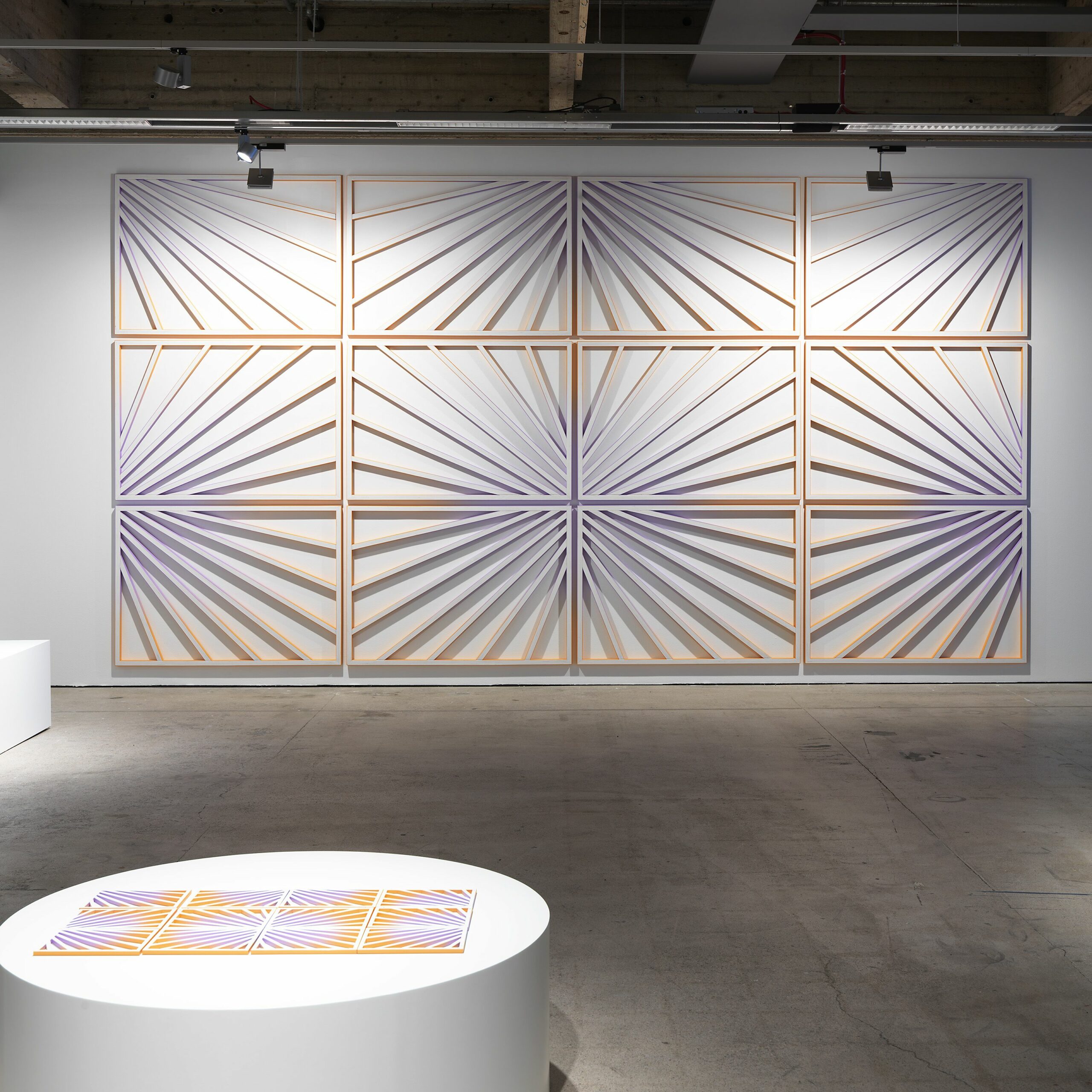
The works of Elina Autio (b. 1985) are often explorations of materials and structures, but colour also plays an important part. The sculptures and installations are created with ready-made elements such as pipes and battens.
In these two commissioned works funded by the L–G Nordström Foundation, Autio has used laminated veneer lumber, a common construction material, along with triangular strips of wood. Team Play consists of twelve identical components, which can be installed in different ways to create new versions of the piece. The scale model on the round pedestal allows visitors to create versions of their own by rearranging the components. The work on the pedestal can also be installed in different ways, depending on the context.
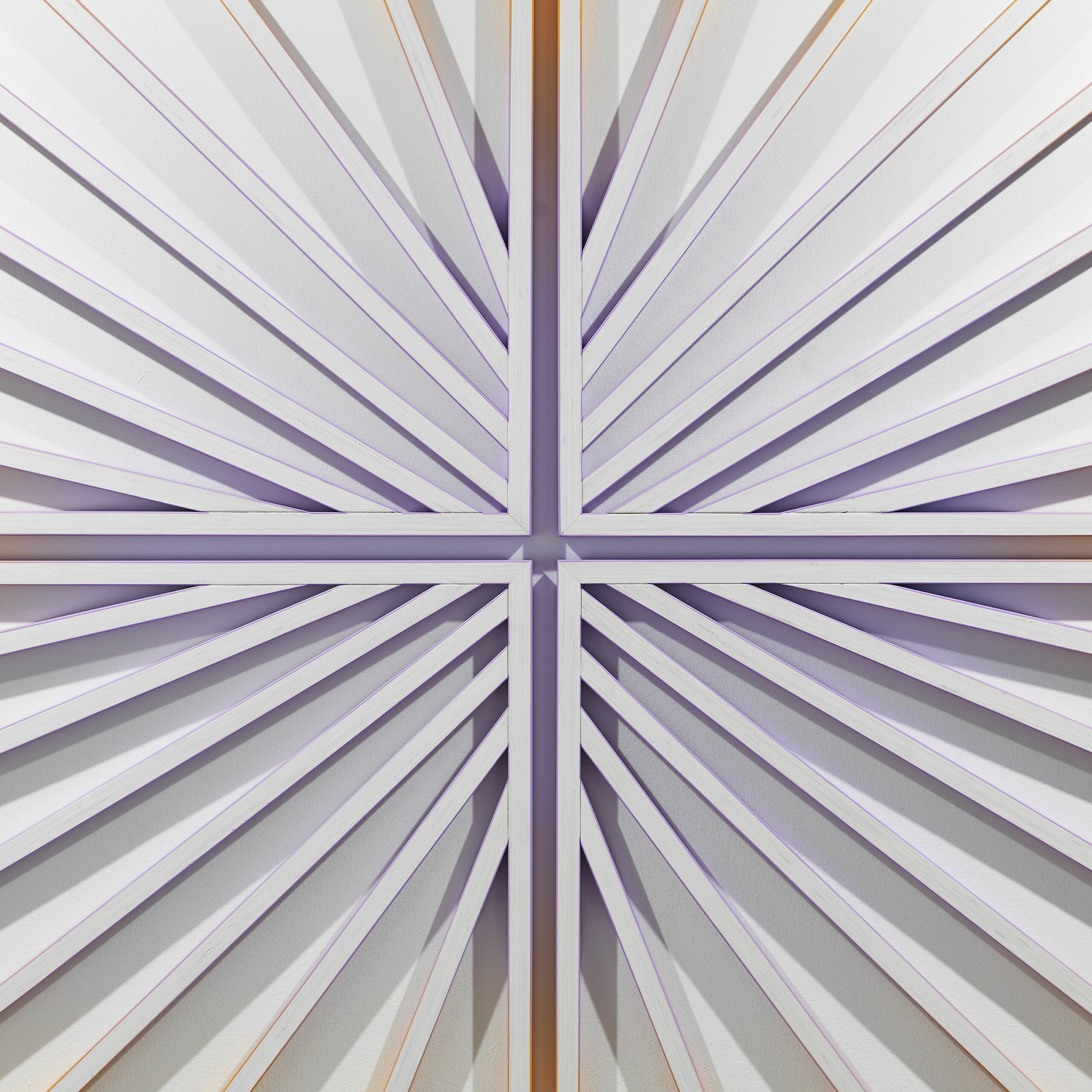
laminated veneer lumber, birch veneer, acrylate paint
Bell, Inka
Shift 1, 7, 11 & 12
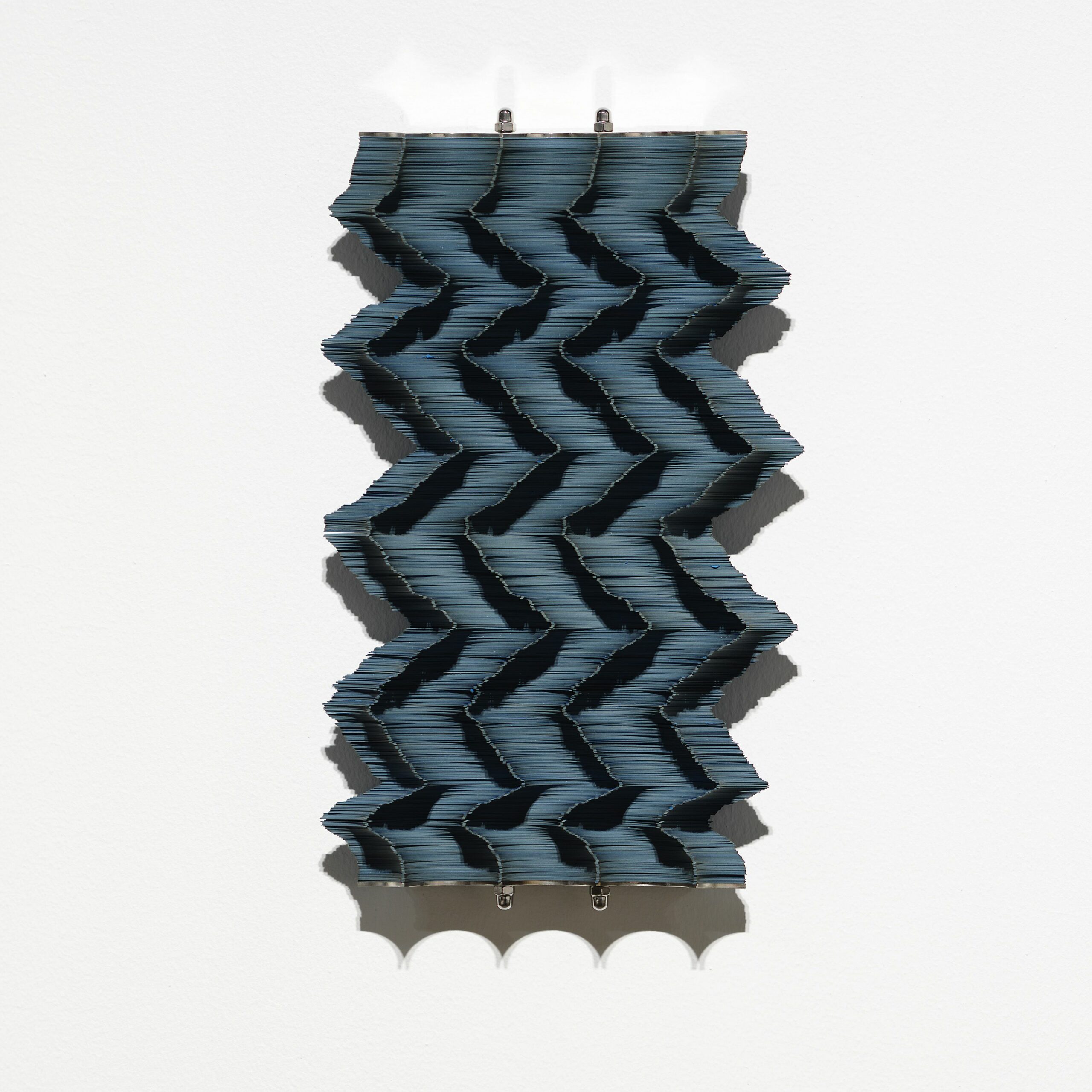
Inka Bell (b. 1981) uses coloured paper as the principal material in her works founded on repetition, layering and varying shapes. When viewed from different distances and directions, the works are transformed. According to Bell herself, the works escape verbal explanation or narrative, a characteristic in line with the essential concerns of concretism.
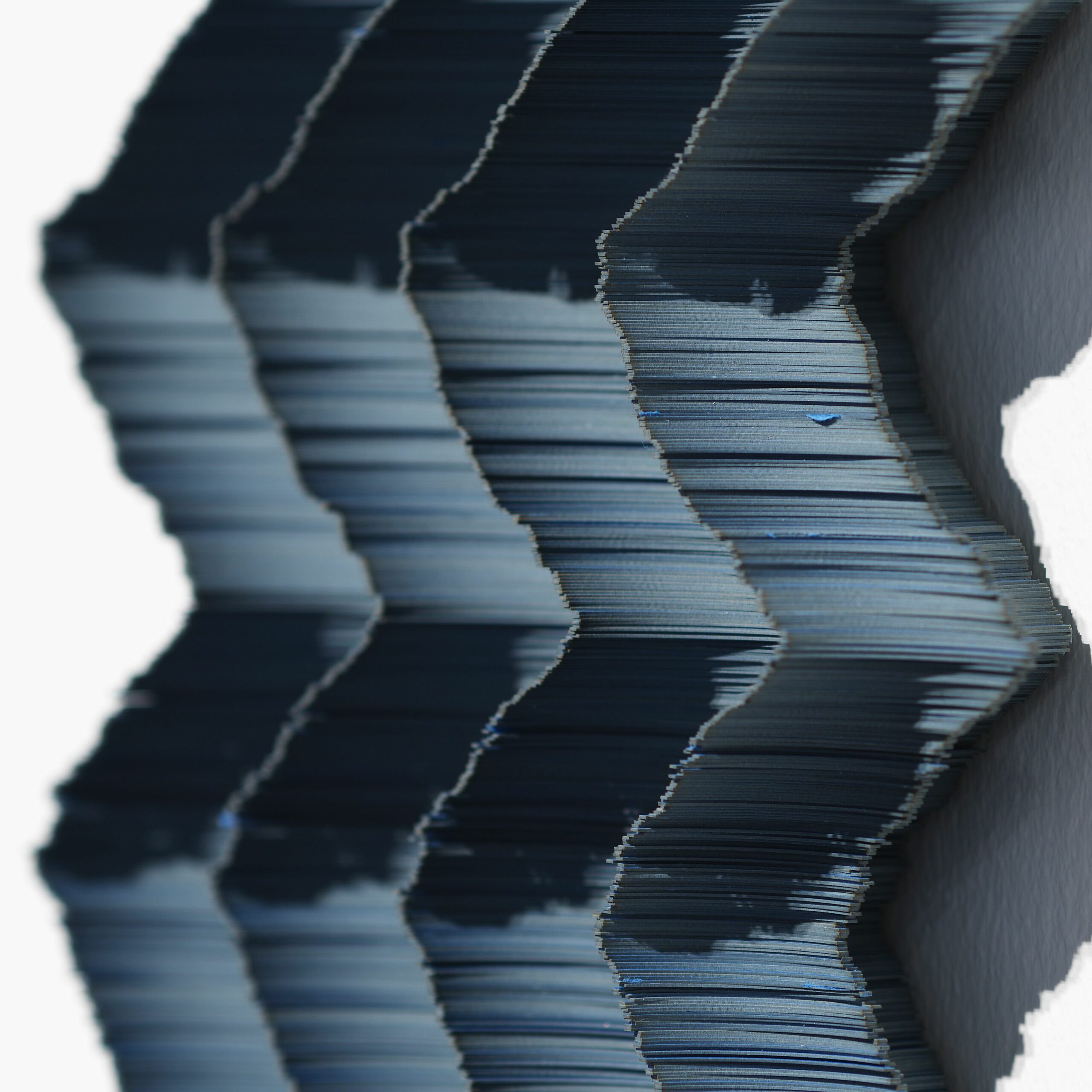
cut paper, metal frame
Breivik, Bård
Reflective Attack

Reflective shapes project out of the wall, each consisting of two convex surfaces separated by a sharp horizontal edge. They seem to raise a question of what they have left behind or conceal within. Each component repeats a specific shape with slight variations. Repetition and variation were in fact central themes in Breivik’s (1948–2016) output, and during his lifetime he worked extensively on an endless series that he likened to musical composition and text.
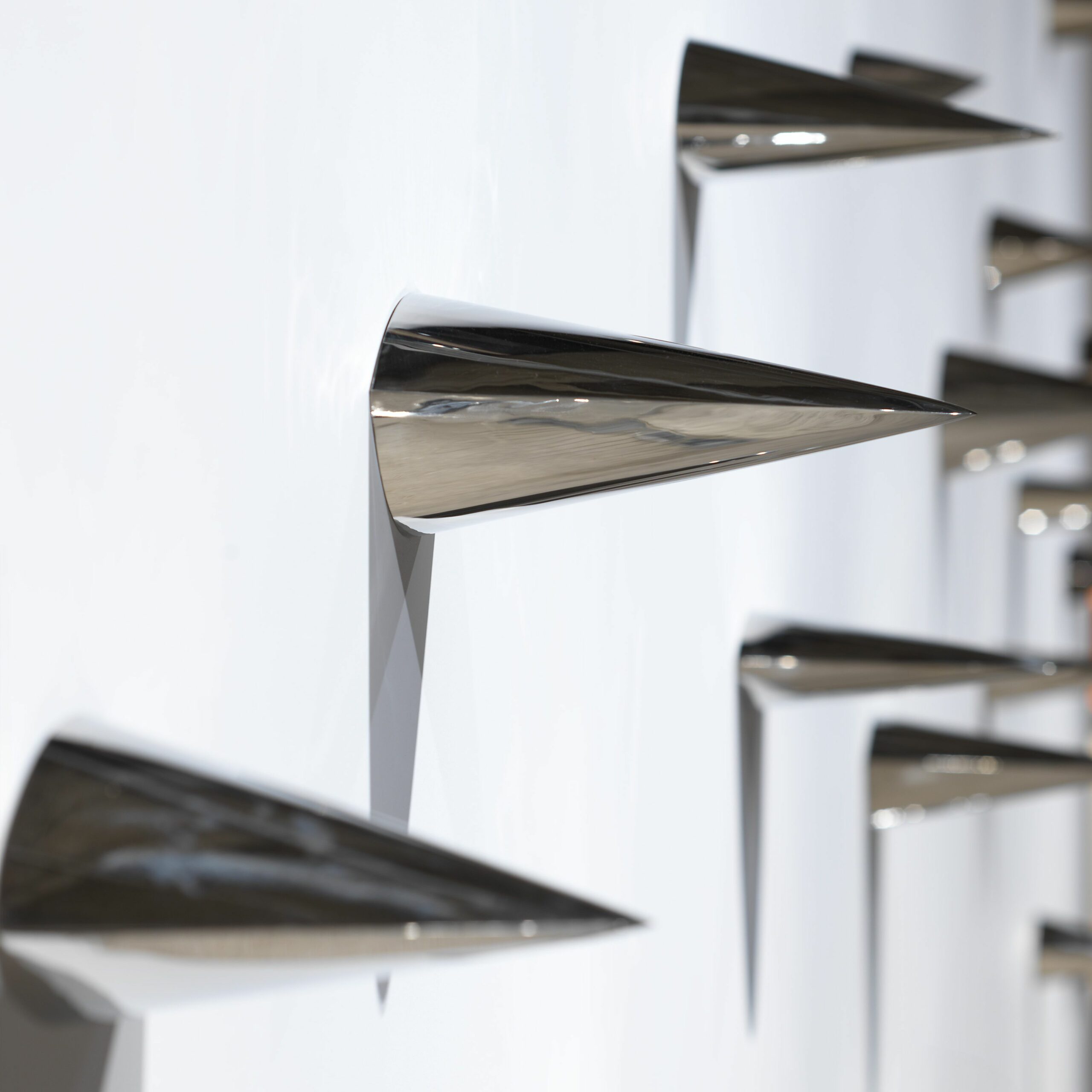
steel
Cavén, Kari
Diamond
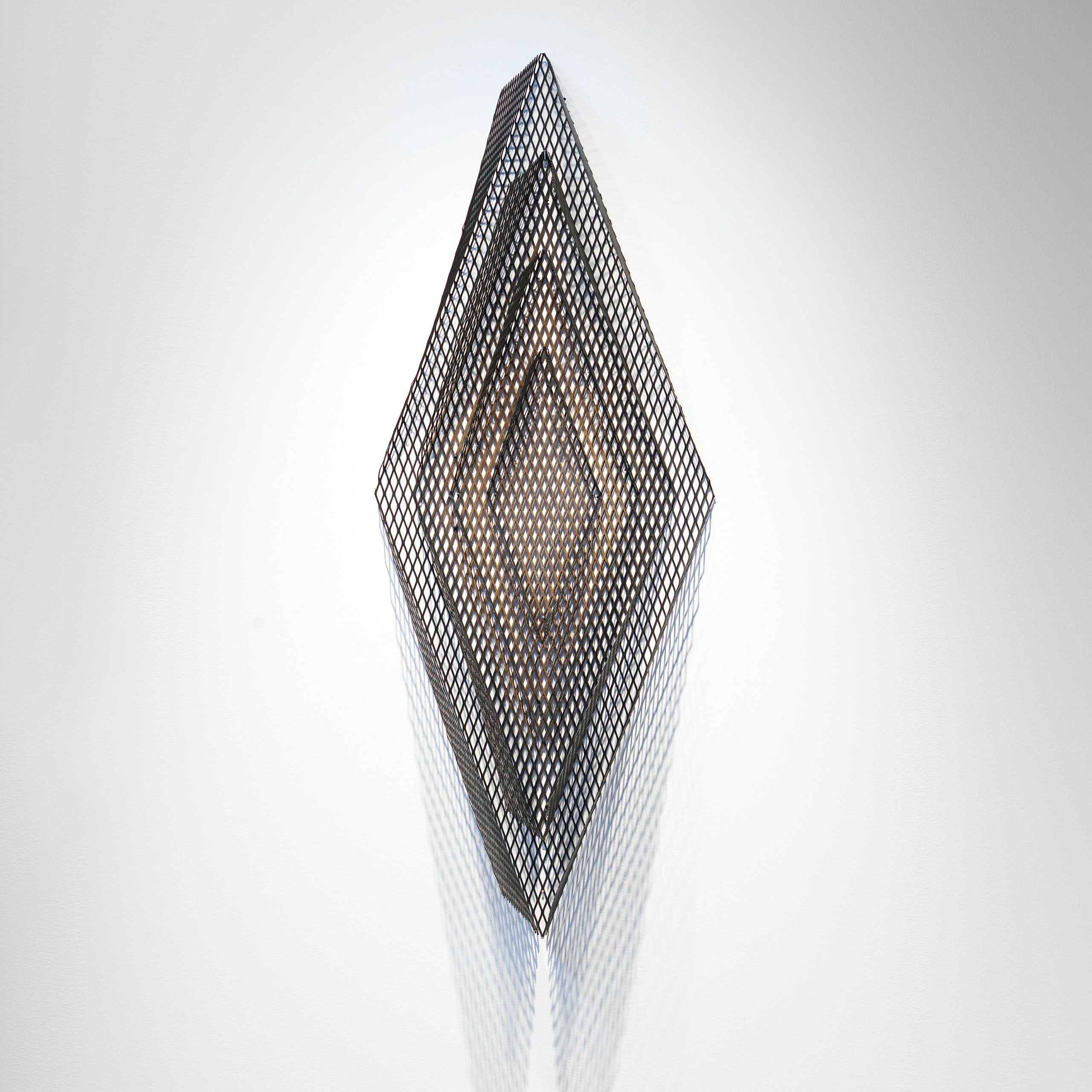
Through his use of recycled materials, Kari Cavén (b. 1954) has for decades been a leading pioneer and bold experimentalist in the field of Finnish sculpture. His works are often cheerful and humorous, making us see our everyday surroundings with fresh eyes. As with many of Cavén’s other new works, Diamond plays with geometry and optical illusion in a manner reminiscent of art of the 1960s.
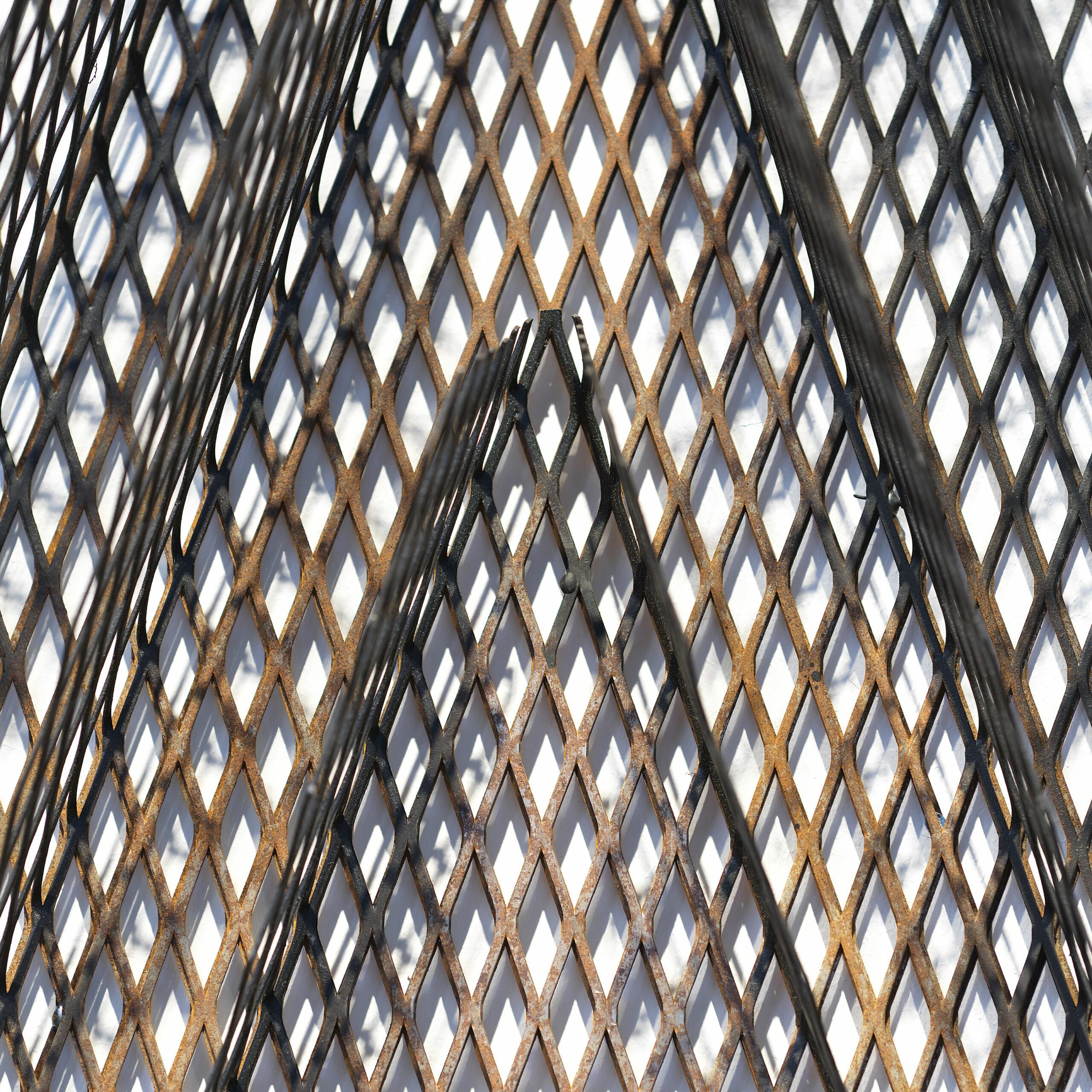
bent metal mesh
Christensen, Lars
Monochrome structure #01

Seen from a distance, the ochre rectangle seems to rely on the power of clear form and monochrome colour. A closer look reveals the work’s three-dimensionality and its surface that bears a resemblance to rug pile. Lars Christensen (b. 1972) often constructs his works using methods that refer to craft techniques. Here he has punched the canvas full of holes and used a spatula to press acrylic paint through them. The “tufts” sticking out of the canvas even cover the sides of the work. The painting invites the viewer to move around and look at it from different angles – as if tracing the way the painting was produced. The movement and energy required to make it are still palpably present in the work’s surface.
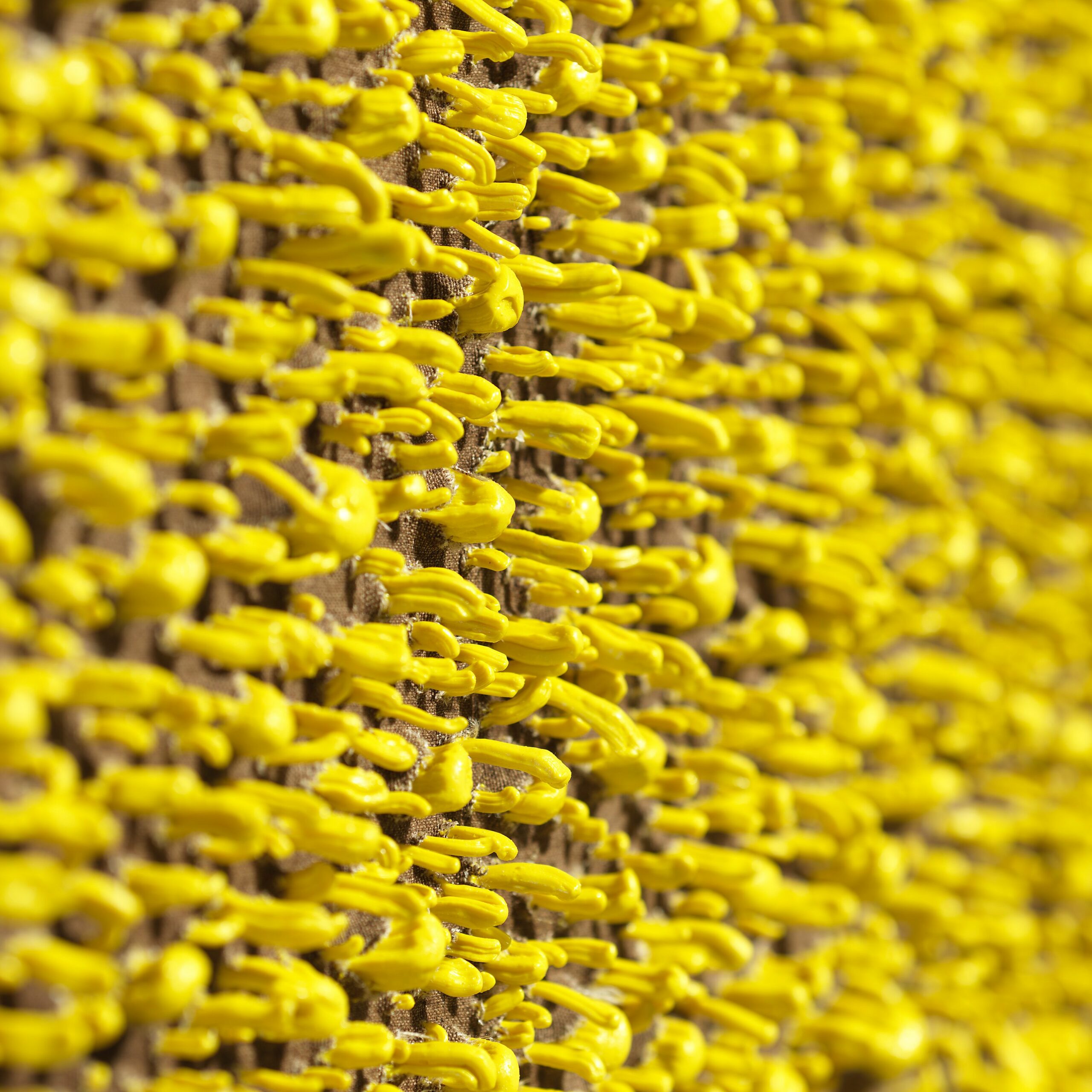
acrylic and gel on canvas
Dahlgren, Jacob
Heaven Is a Place on Earth

An artwork you can touch! Step on the scales, sit on them and have fun with the piece. Jacob Dahlgren (b. 1970) creates art from everyday things that can be bought in a supermarket. The possibility to interact physically with an artwork violates the fundamental modernist principle of separating the experience of art from our everyday life. The geometric and symmetric structure of this work nevertheless adheres to the formal language of modern art. Its title can be seen as a metaphor in which a formerly untouchable idea – non-figurative art – has been taken down from its exalted heights to the gallery floor to commingle with the public and its needs.

240 scales
Edholm, Ann
Lichtzwang
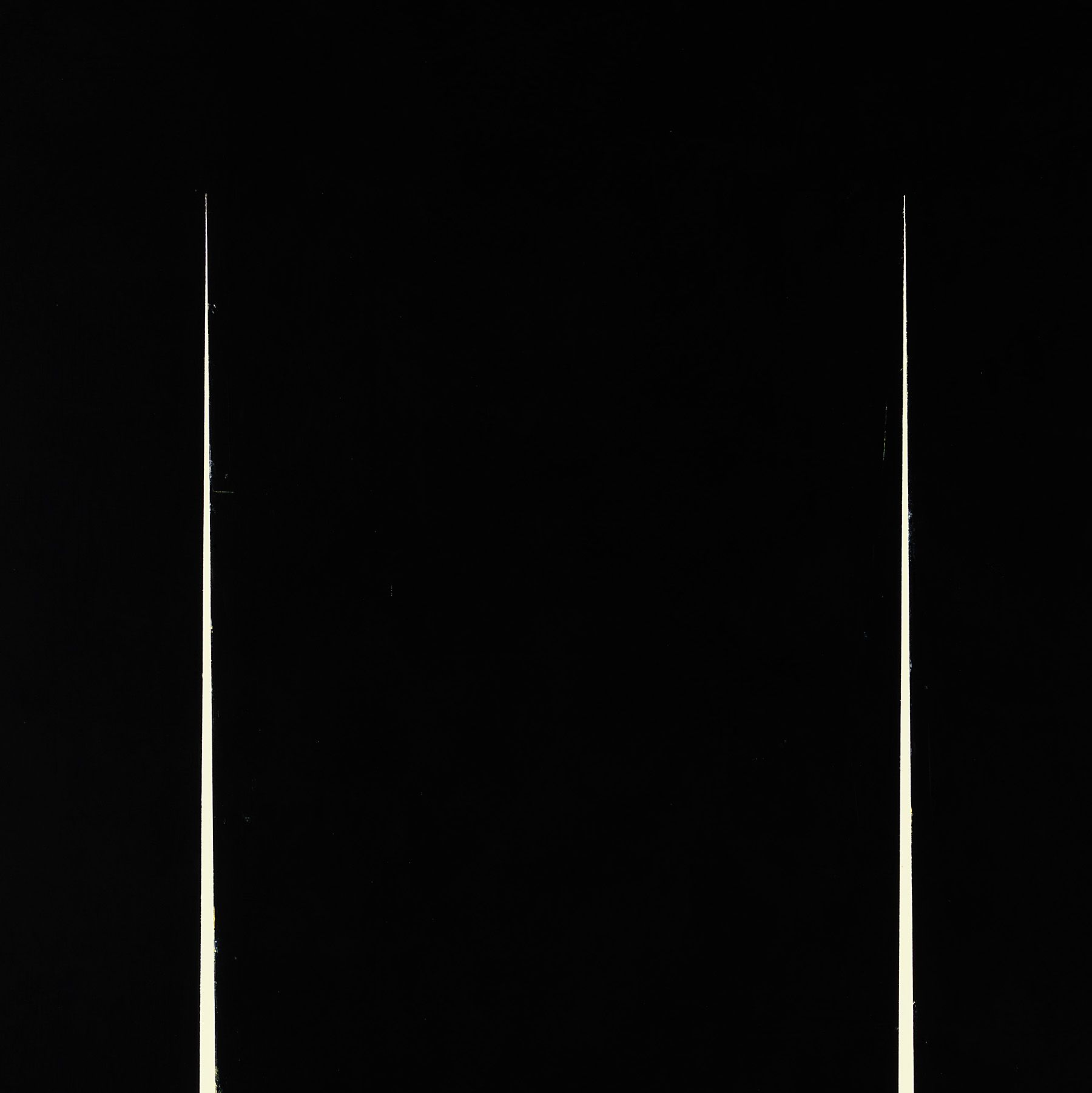
Ann Edholm (b. 1953) is a painter whose works often produce an impression of perspective. Lichtzwang seems to suggest a bright space at the back of the work, as if shining through slits in a dark curtain. The viewer may also see a black surface with two white, narrow, sharp shapes in front of it. Edholm says she seeks to attain a sense of the sacred and the physical in her paintings, but she has also been influenced by paintings of extreme cruelty and suffering, such as Pablo Picasso’s Guernica, as well as photographs from the concentration camp in Auschwitz.

oil on canvas
Guðmundsson, Kristján
Current Roll
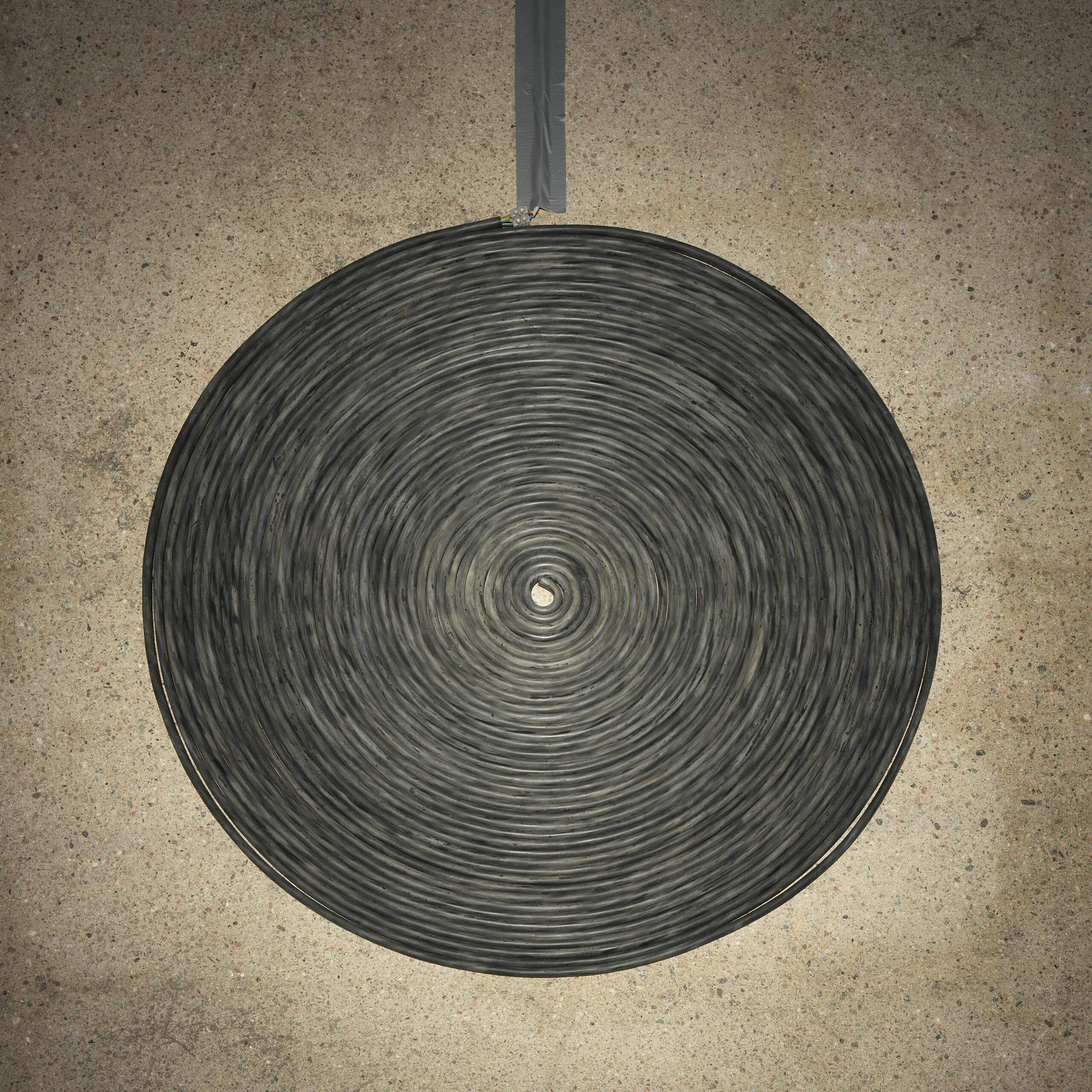
“The end of the cable will give you an electric shock!” state the instructions for the presentation of this work by the conceptual artist from Iceland. The work is made of electric cable, and its key ingredient is electric current. How does one make electricity visible? Guðmundsson’s (b. 1941) solution is to show the current inside a coiled length of cable. It appears to give electricity a form that is visible to the eye and can therefore be measured and shaped.

coiled electric cable
Juopperi, Elina
Heritage
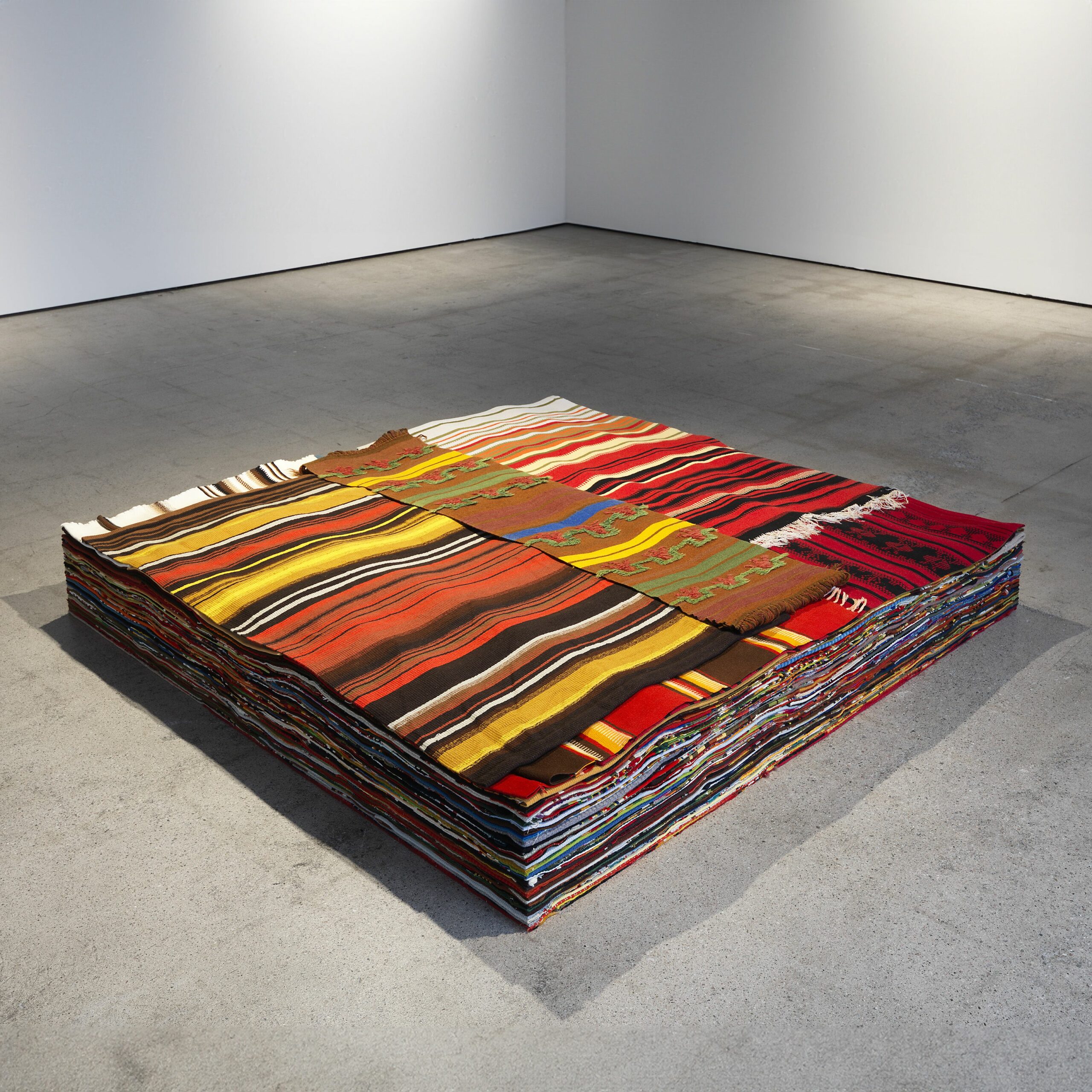
This work is made up of raanus. Raanu (rana in Swedish, ráána in Inari Sami, grene in Norwegian) is a smooth woven textile that was traditionally used as a blanket or covering on pole tents. In later times, raanus have also been used as wall textiles. You can participate in the Heritage project by donating a raanu to be incorporated into the work. Your name will be added to a brass plaque on display next to the work. Click here for more details.
Elina Juopperi occasionally works on her piece Heritage in the exhibition space and is happy to answer any questions you may have regarding the work.
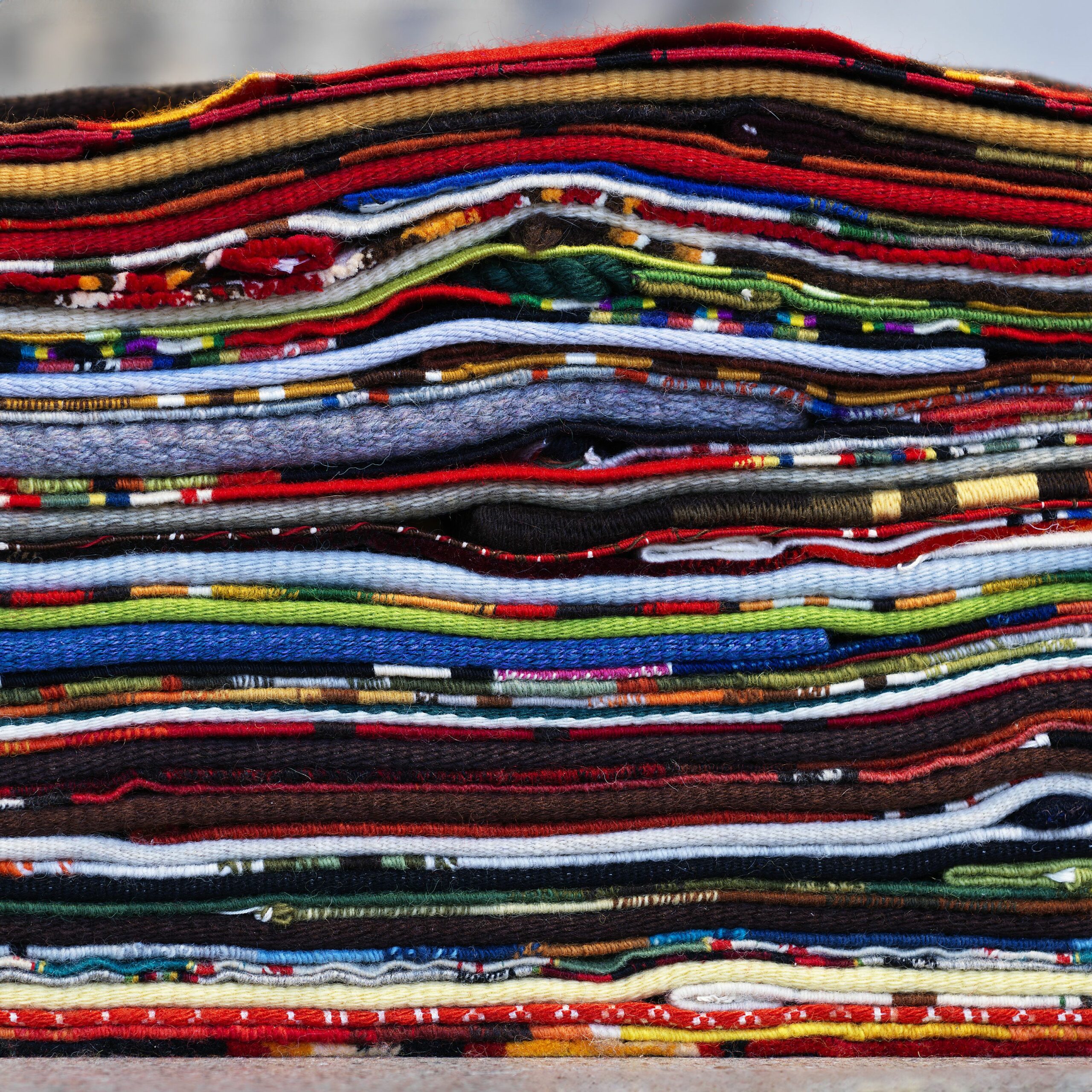
wall rugs
Lapin, Leonhard
CODE XXXXII
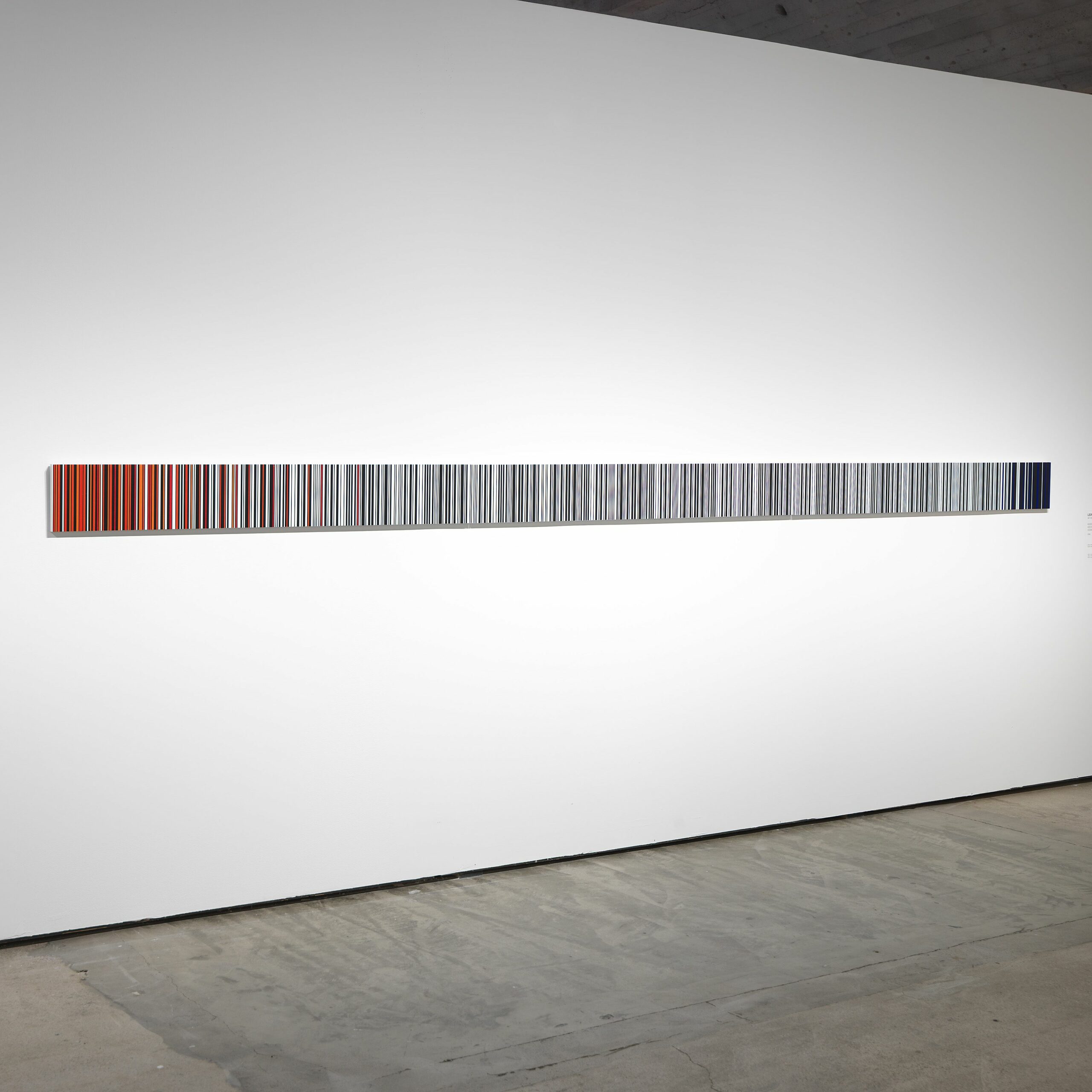
The key component of this work is the barcode, the most widespread sign of our time and a symbol of consumer society. Initiated by Leonhard Lapin (1947–2022) in 2003, the series originally presented the codes in black and white, but eventually he included also a limited number of colours. For Lapin, the colours represent fields of energy. The illusion of space is created by the rhythm of the lines of varying width. The motif, an electronic code, can in the viewer’s eyes be transformed into a landscape bathing in light or into a musical interval. According to the artist, a barcode reader would only find absurdity in the code – not a single product or service.
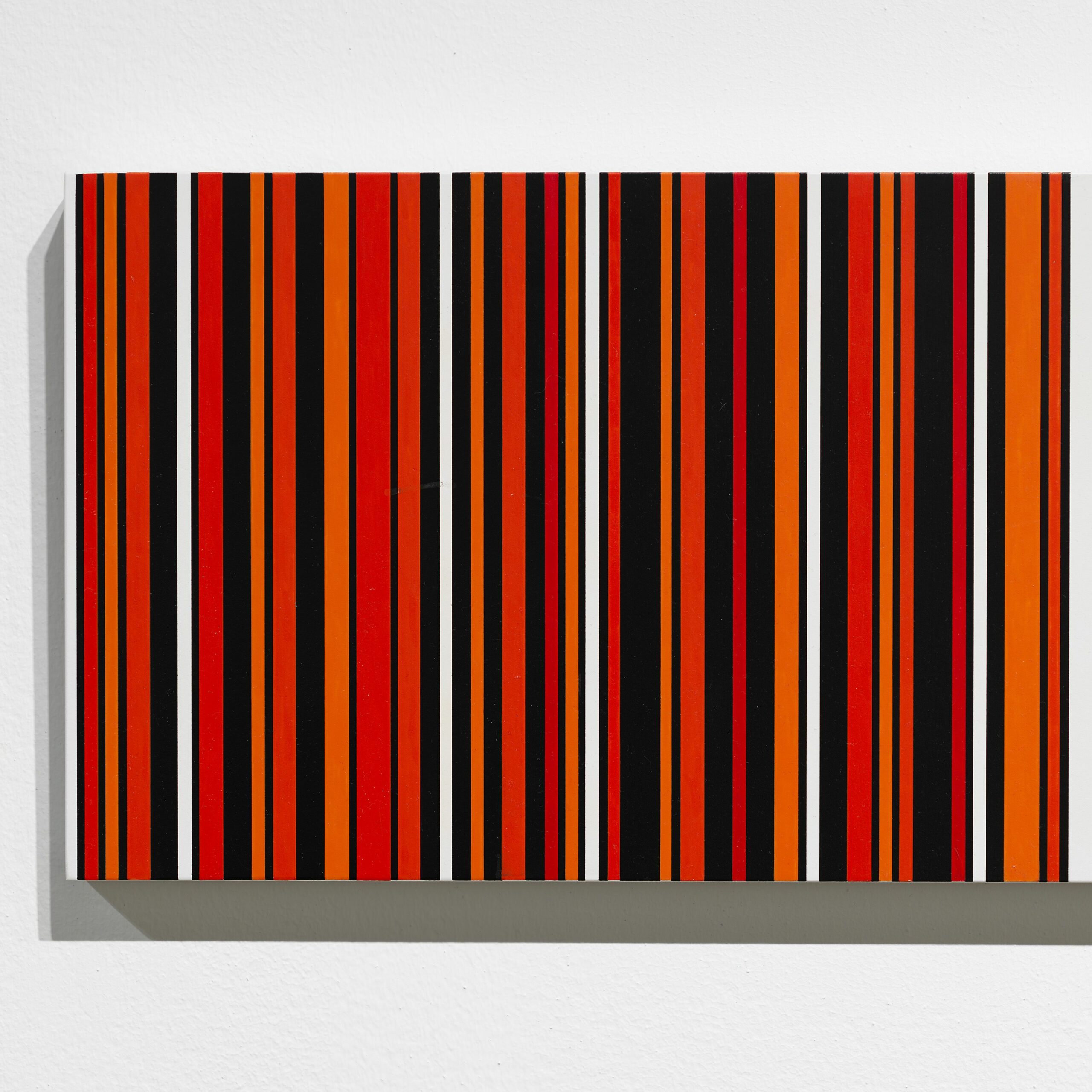
acrylic, serigraphy on board
Niva, Jussi
Free-floating (2)

This structural work of art breaks free of the traditional two-dimensional surface of painting, engaging in dialogue with its surroundings and the audience. Jussi Niva (b. 1966) is one of the first Finnish artists to play with the three-dimensionality and spatiality of painting; his works make one aware of the architecture. This piece invites the viewer to focus on the surface of the work and the details of the paintwork itself.
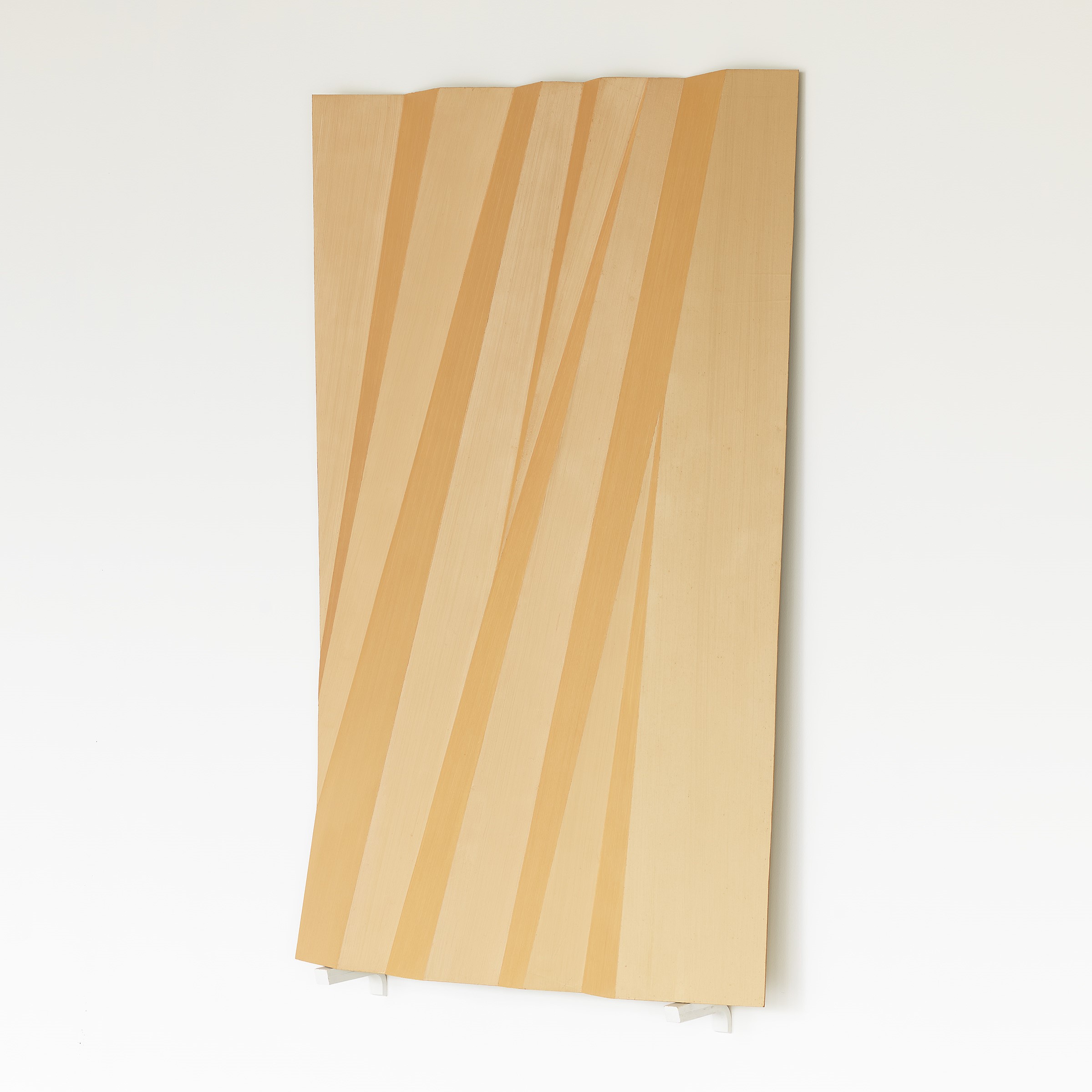
oil on board
Nordström, Lars-Gunnar
Max Jacob’s Stairs
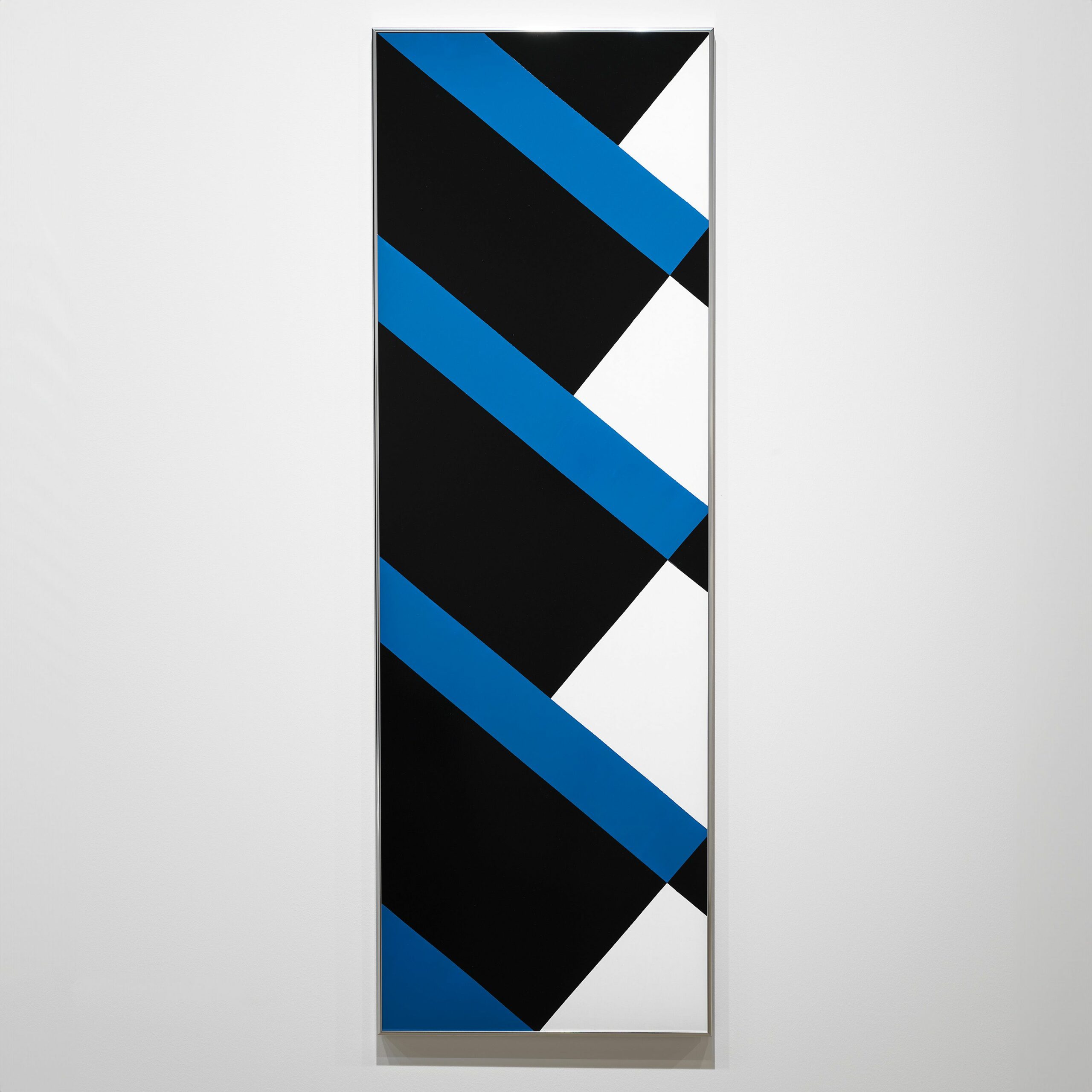
Lars-Gunnar Nordström (1924–2014) was a pioneer of concretism in Finland. From the 1950s onwards, he developed a formal language of his own based on structure and geometry. “Nubben” was a passionate fan and collector of jazz music who eschewed mathematical formulas and composed his works through intuition and an innate sense of rhythm. For him, colours and shapes had a similar experiential impact as musical notes and chords. The resonance of colours in his paintings is achieved through the careful selection of shapes and their interrelations. Nubben said, in fact, that he created music for the eyes. Fascinated by countless variations of colour, line and surface, he remained true to his distinctive formal language until the end of his career.

painting on board
Närhinen, Maija
Packed in
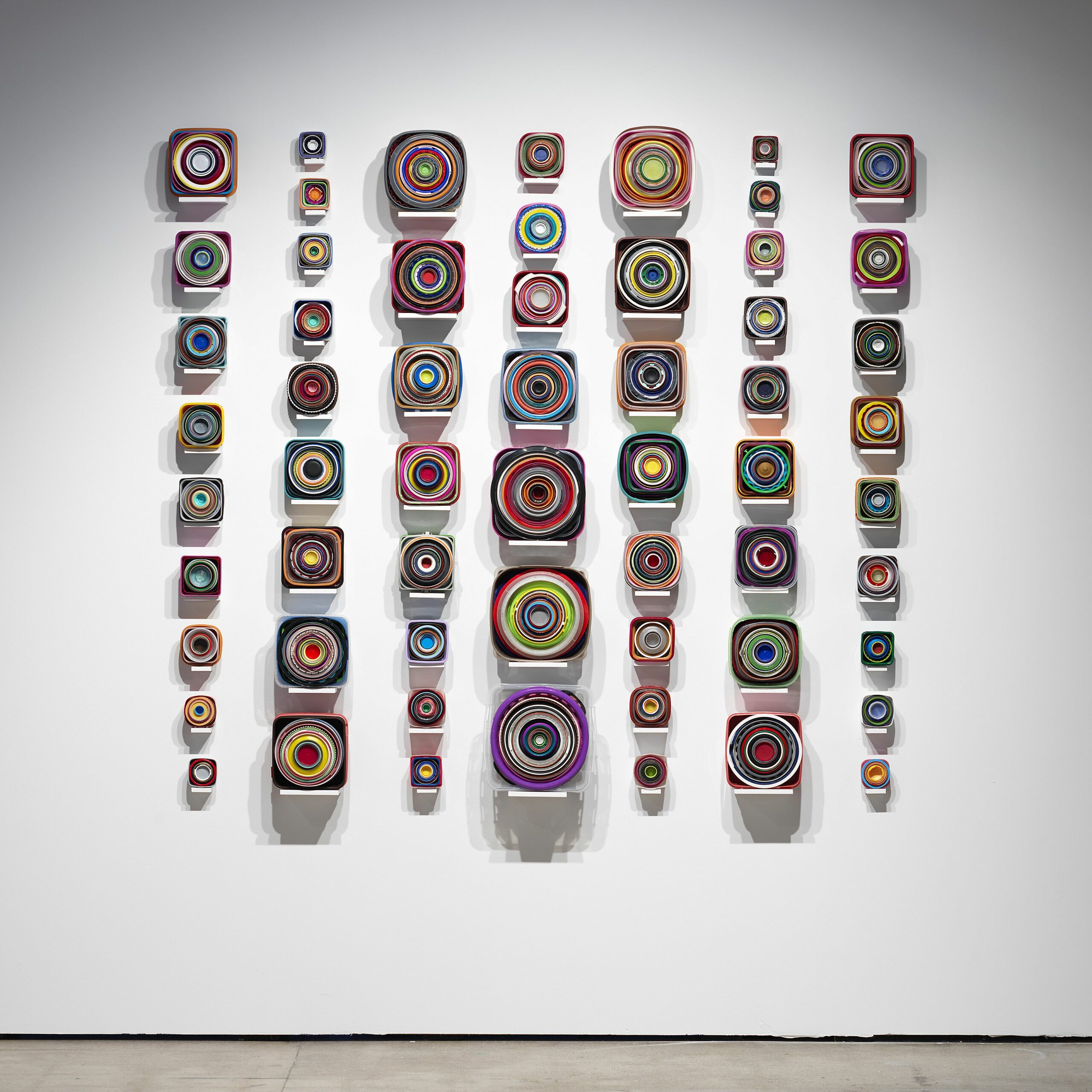
Maija Närhinen (b. 1967) makes her works mostly with recycled materials. In this new piece, commissioned by EMMA, she has used round and rectangular plastic pots that fit inside each other with precision. The colours, shapes and variations in size produce an effect that makes the outlines of the pots swim before your eyes. On the round pedestal is a sample of the material to illustrate how the work is constructed.
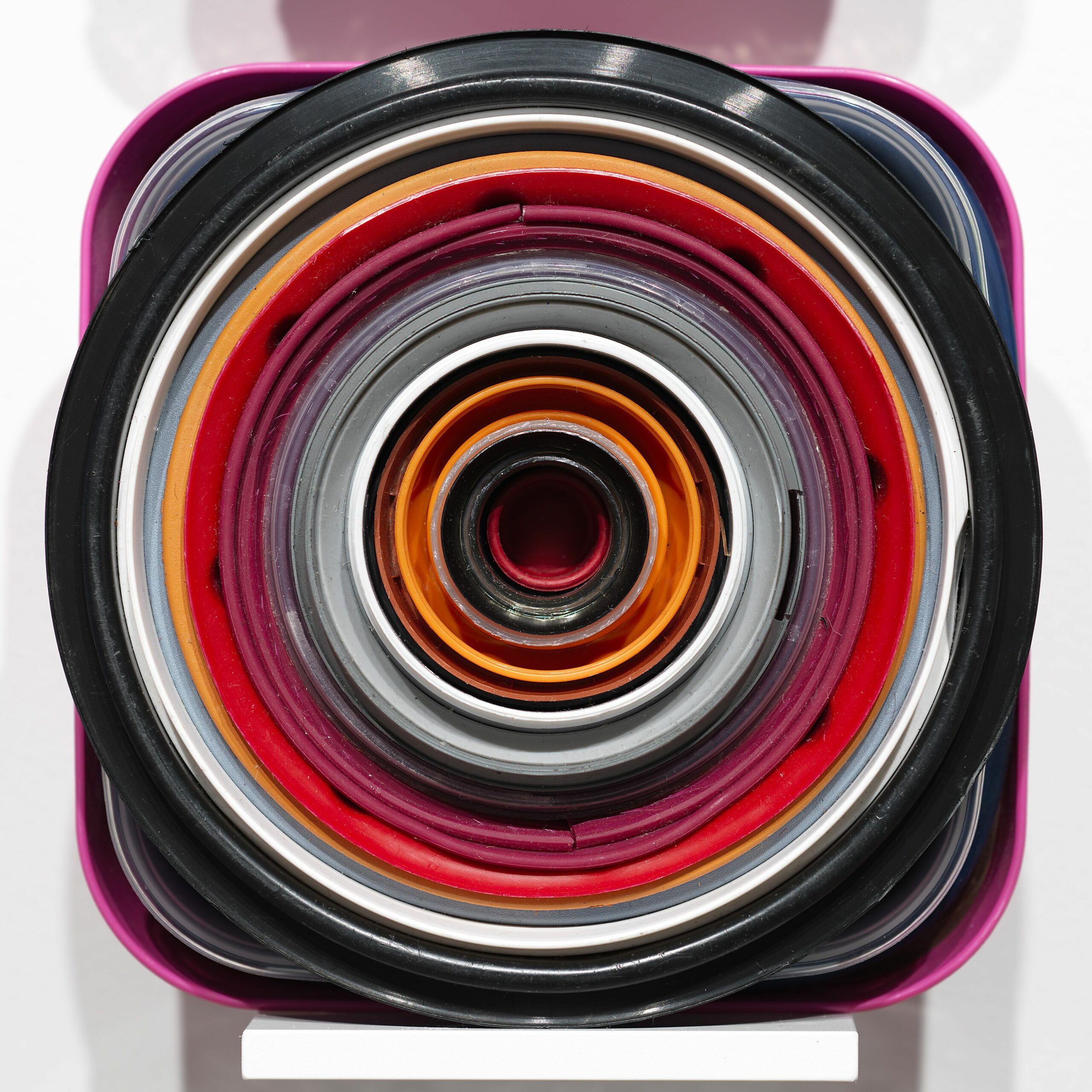
plastic vessels
Rantanen, Silja
Information on the Floor

Originally commissioned for the Sello Library in Leppävaara, Espoo, this work consists of 150 brick-shaped monochromatic objects. The same basic unit appears in Rantanen’s (b. 1955) earlier installations: in Burano (1998), and in Colour Chart (1999), a work created for the Finnish Embassy in Berlin. The colours of the objects in Knowledge on the Floor come from lipsticks. Rantanen visited the cosmetics department at the Stockmann department store in Helsinki and then created colour samples on paper with lipstick testers, later painting the work in oils. The colour samples are for Rantanen nothing but colour charts, and she likes them just as they are, without commenting any further on modernism or gender identities.
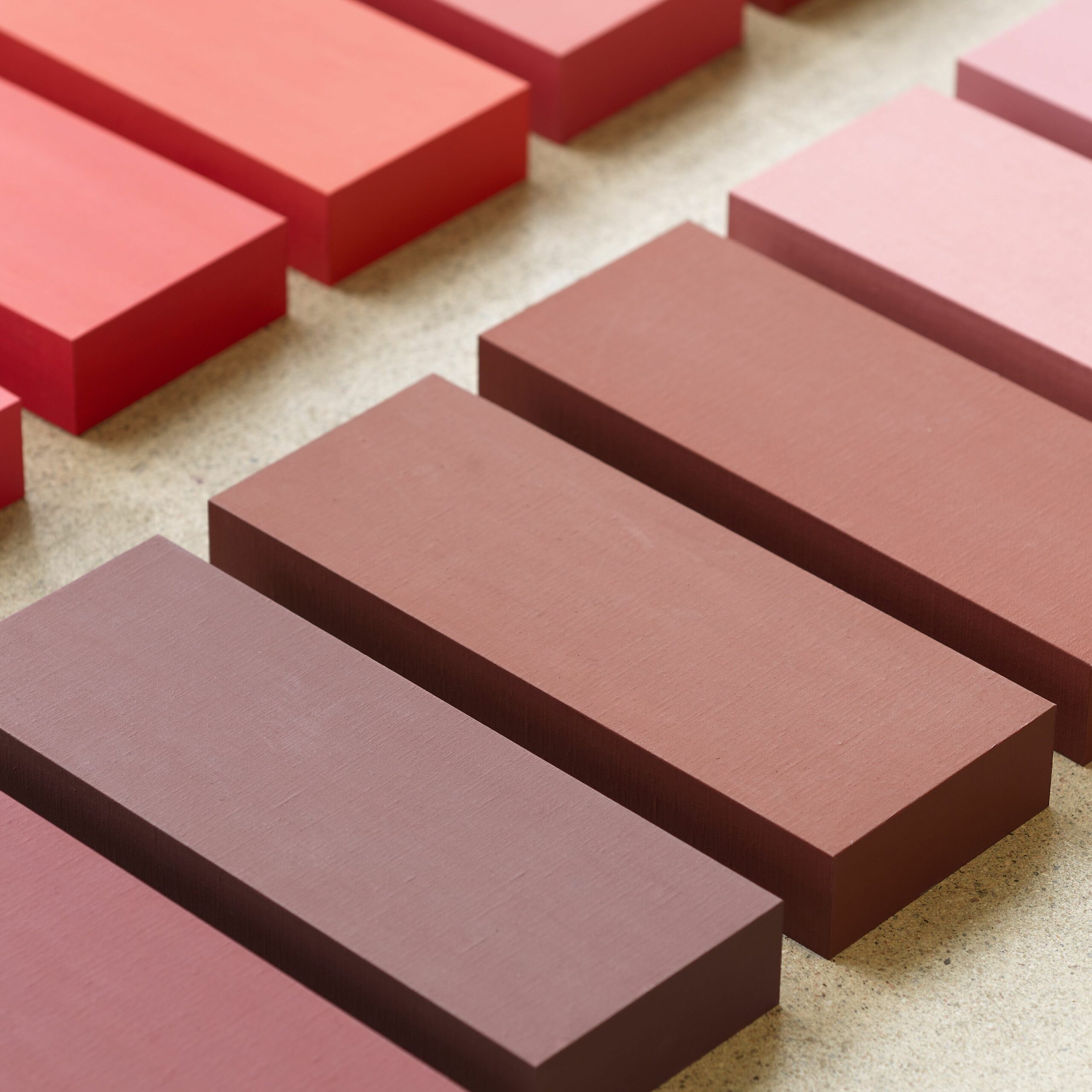
plywood, oil on canvas
Róbertsdóttir, Ragna
Untitled
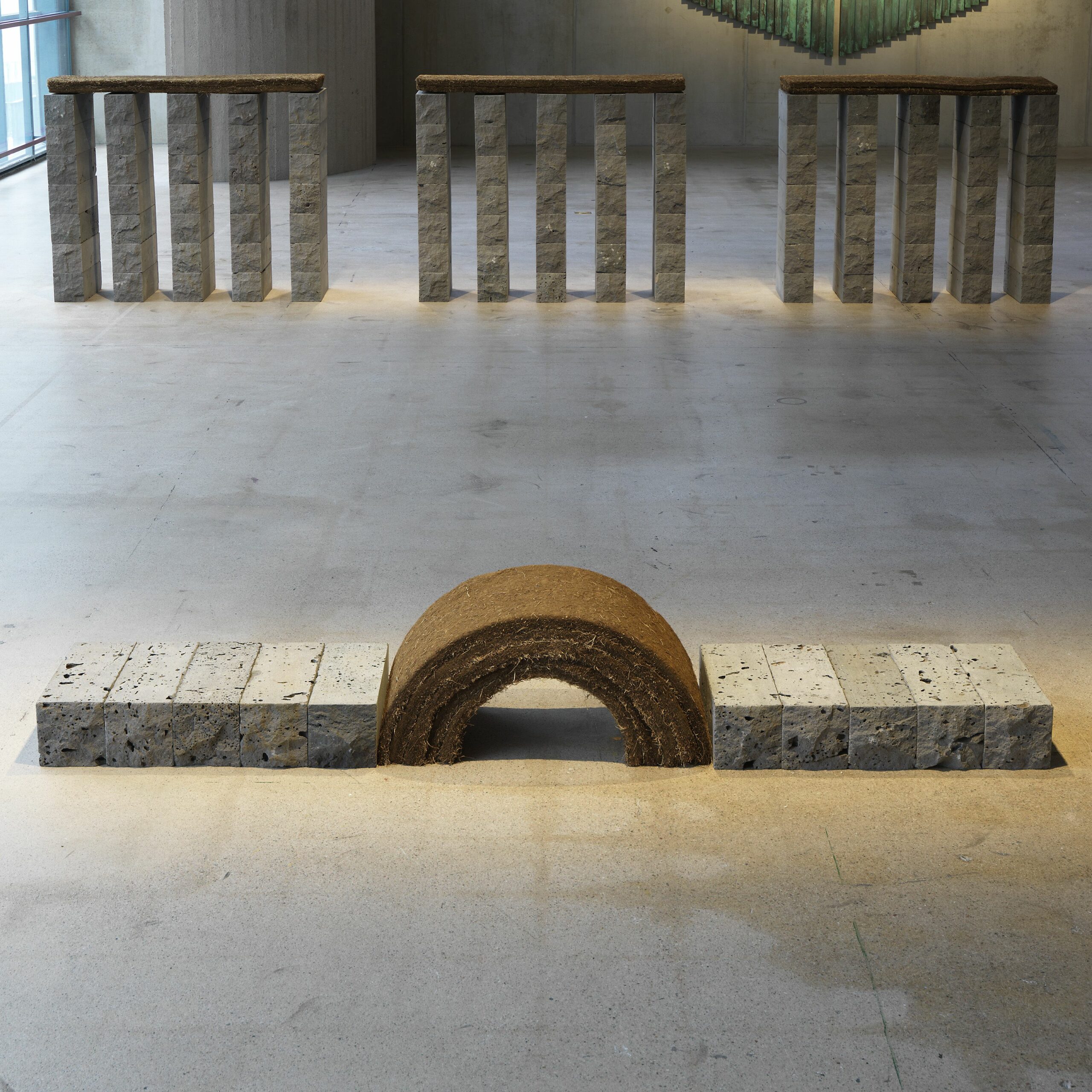
Lava that has erupted from the bowels of the earth over the ages has been cut into neat geometric shapes in this work by the Icelandic artist. The blocks of lava and peat are stacked with precision. The lava was collected by Róbertsdóttir (b. 1945) near volcanoes in her homeland. Peat is also an integral part of the Icelandic landscape and culture, because it was traditionally used to build houses. Both materials are shaped by the earth and are the results of sustained processes.

peat and lava blocks
Sassi, Pekka
Colours
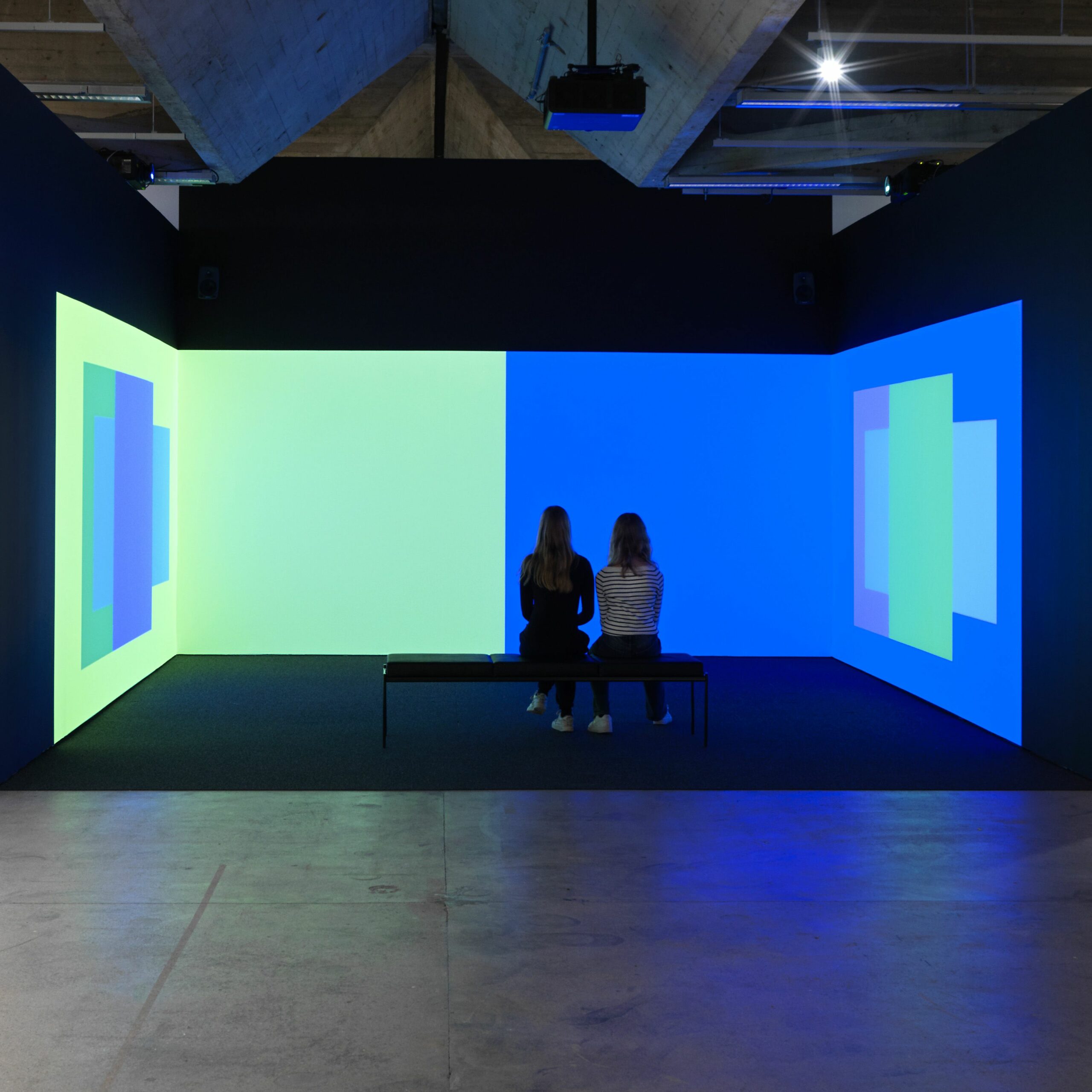
Filling three walls of the gallery to its very edges, this immersive video work by Pekka Sassi (b. 1969) employs the shapes and colours of non-representational geometric art, which alternate in a calm rhythm. When the viewer stands in the centre of the piece, the visual impact becomes a bodily and spatial experience. Complemented by a soundscape, the work creates a meditative and almost hypnotic space. It pushes the traditional boundaries of concrete art towards that of a holistic and spiritual experience.

three-channel projection
Sirp, Sandra
Transitions
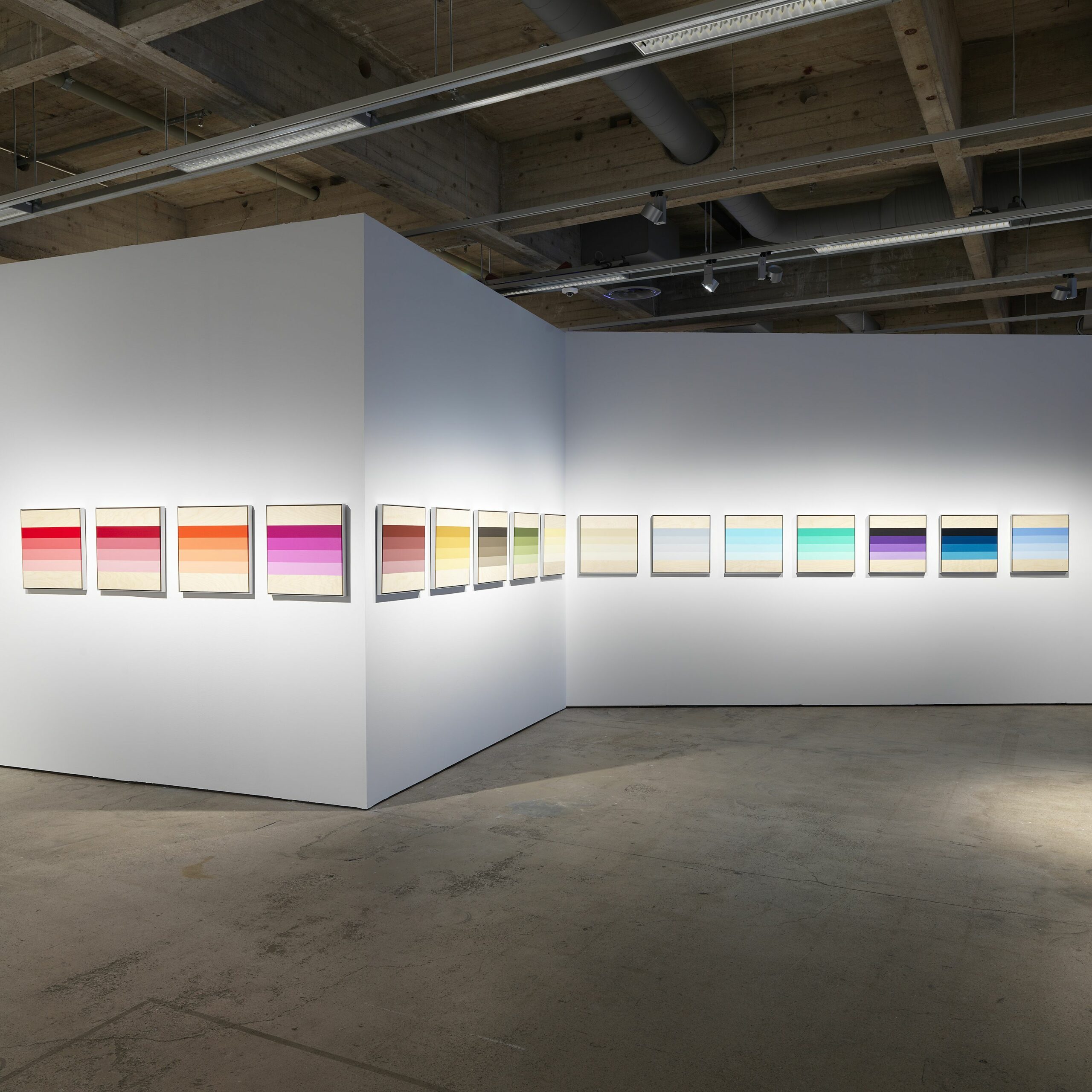
Consisting of 16 standalone pieces that can be arranged any way you like, this geometric series establishes a dominating presence in the gallery. The paintings are minimalistic, emphasising clean lines and simplicity. Sandra Sirp (b. 1988) favours sparse colours, and the plywood bases of the works are left exposed.
On the other hand, the vibrant colours challenge the idea that colour is neutral: they engage in a dialogue with each other and give rise to all kinds of associations. According to the artist, the works can be grouped by colour to reflect the four basic elements of ancient natural philosophy: earth, water, fire and air. They symbolise balance, movement, change and breath.
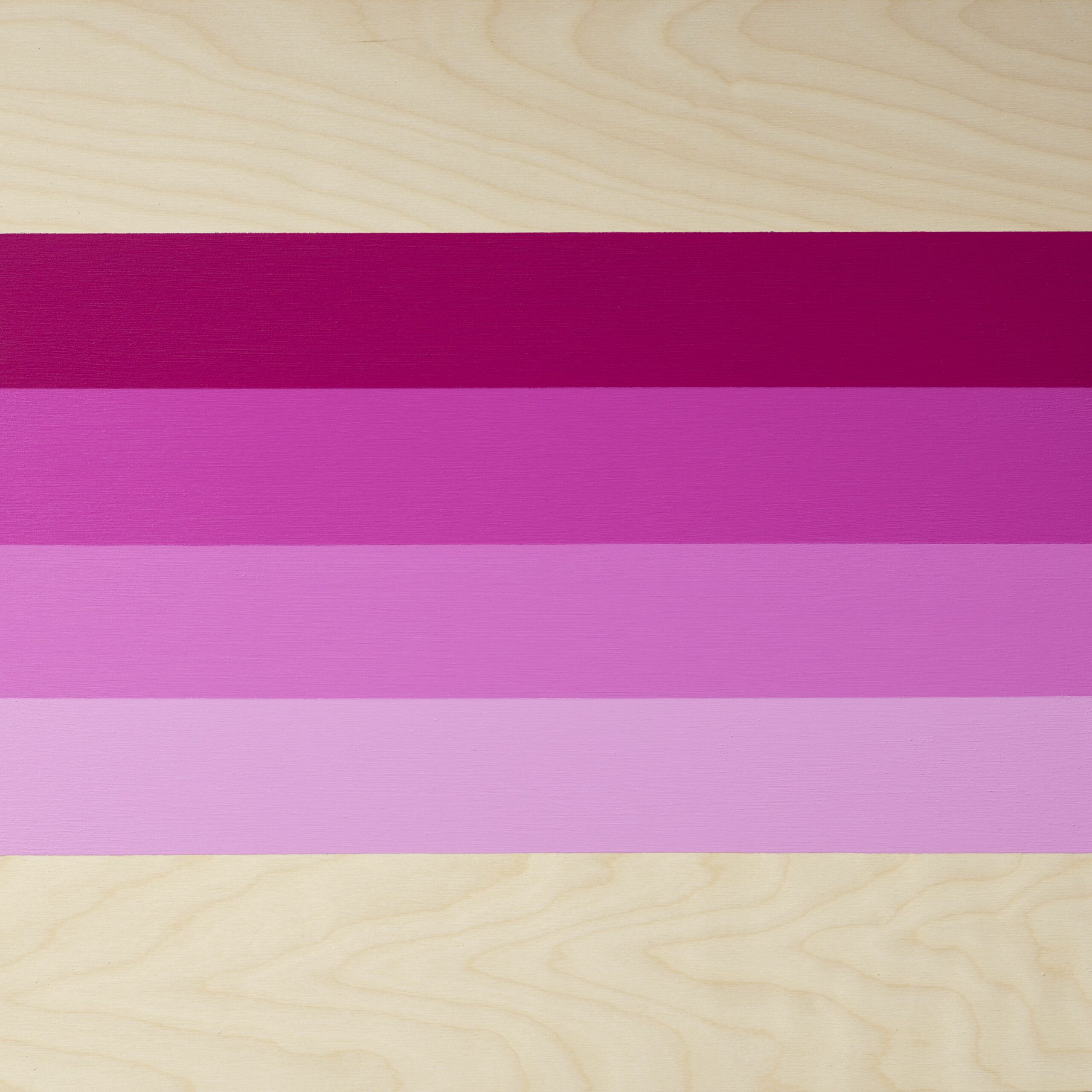
oil on plywood
Watch the artist interviews on EMMA Zone
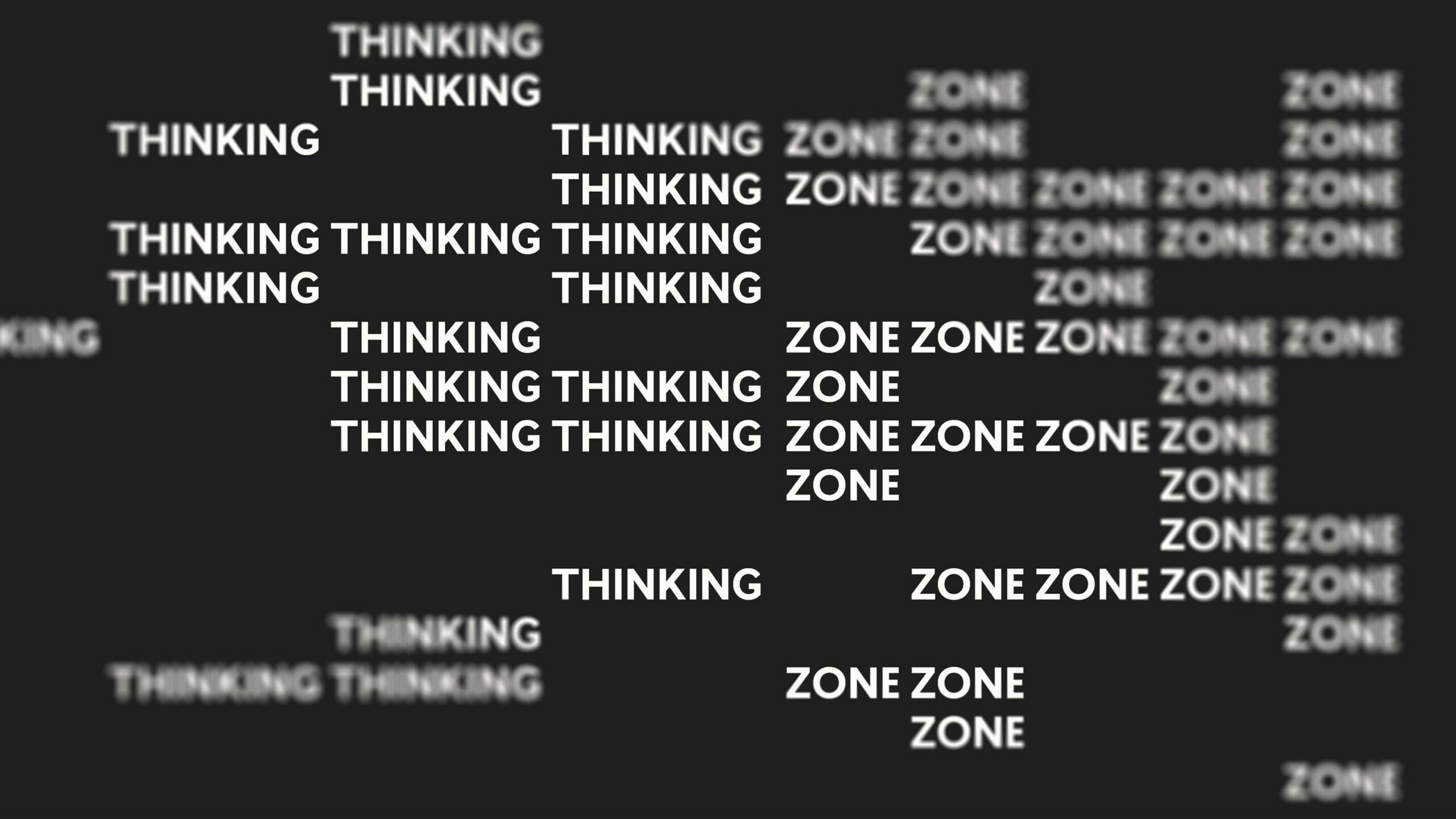
EMMA Zone features artist interviews with Elina Autio, Inka Bell, Elina Juopperi and Kyösti Pärkinen.
→ www.emmazone.fi ←
EMMA Zone is the digital home of EMMA. The site offers a variety content about art, design and the museum’s work under four categories: Thinking Zone, Behind the Scenes at EMMA, Bubbling Underand Children’s Art Questions.
EMMA Zone – always open for art!